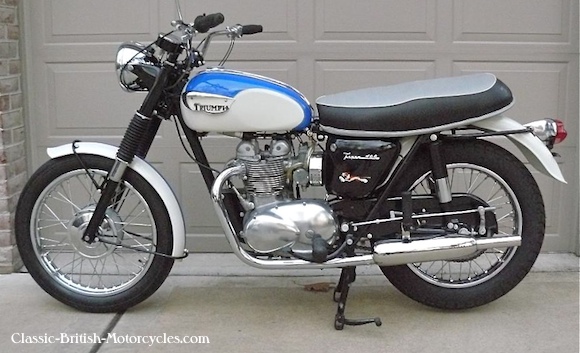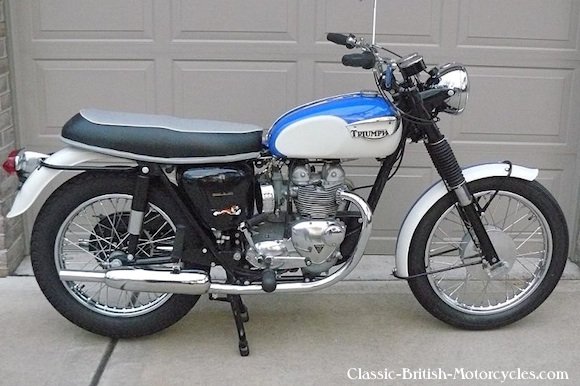1967 Triumph Daytona 500
1967 TRIUMPH DAYTONA – WHAT’S IN A NAME?
Triumph derived the name of this bike from Buddy Elmore’s win at the 1966 Daytona 200 at Daytona Beach FL riding a Triumph T100T Tiger 500 twin to Triumph’s first-ever Daytona victory, with an average speed of 96.6 mph. By 1967, it was an official production model with the model designation was T100R. Just to kick things off, Gary Nixon won the 1967 Daytona 200 on a new Triumph Daytona.

1967 TRIUMPH DAYTONA 500 BACKGROUND
Triumph master engineer Doug Hele completely reworked the cylinder head for the Daytona race bike such that 2 Amal carburetors were used (instead of the usual one), and the valve angles were reduced by 2-degrees to alleviate clearance problems between the two valves during overlap, due to the larger intake valves. Contrary to British custom, it was also an “oversquare” engine, meaning that the bore was larger than the length of the stroke. This made it “peaky”, meaning there was very little power at low RPMs, and it wasn’t until about 3500 RPM that it started to come alive. The valvetrain tended to wear out prematurely, causing excessive oil consumption.
1967 Triumph Daytona SPECIFICATIONS
| Model designation Engine type Displacement Bore & Stroke Compression ratio Fuel system Horsepower @ RPM Primary drive Clutch Gearbox Shifter Final drive Frame type Suspension, front Suspension, rear Brakes, front Brakes, rear Tire, front Tire, rear Wheelbase Curb weight Fuel capacity |
T100R Air-cooled OHV vertical twin 490cc / 30 ci 69mm X 65.5mm 9.0:1 2- 26mm Amal Concentric 39hp @ 7400 rpm Chain Multi-plate, wet 4-speed constant mesh Right-foot Chain Single down tube Telescopic fork, hydraulic Swing arm w/2 coil-over shocks 8-inch SLS drum 7-inch SLS drum 3.25 X 19 4.00 X 18 53.6″ / 1360mm 386 lbs / 175 kg 3.75 US gal / 14 L |
A WORK IN PROGRESS
In our efforts to complete our online index, and make this the world’s greatest website about classic British motorcycles, we’re building pages as fast as we can. The first thing we add are the pictures. Then come the specifications and then the history. So, if you see a page that just has only pictures on it, or just pictures and specs, please check back in a few weeks to see if we have it done. Thanks for your patience. And thanks for visiting Classic-British-Motorcycles.com. Please tell your friends about us.


